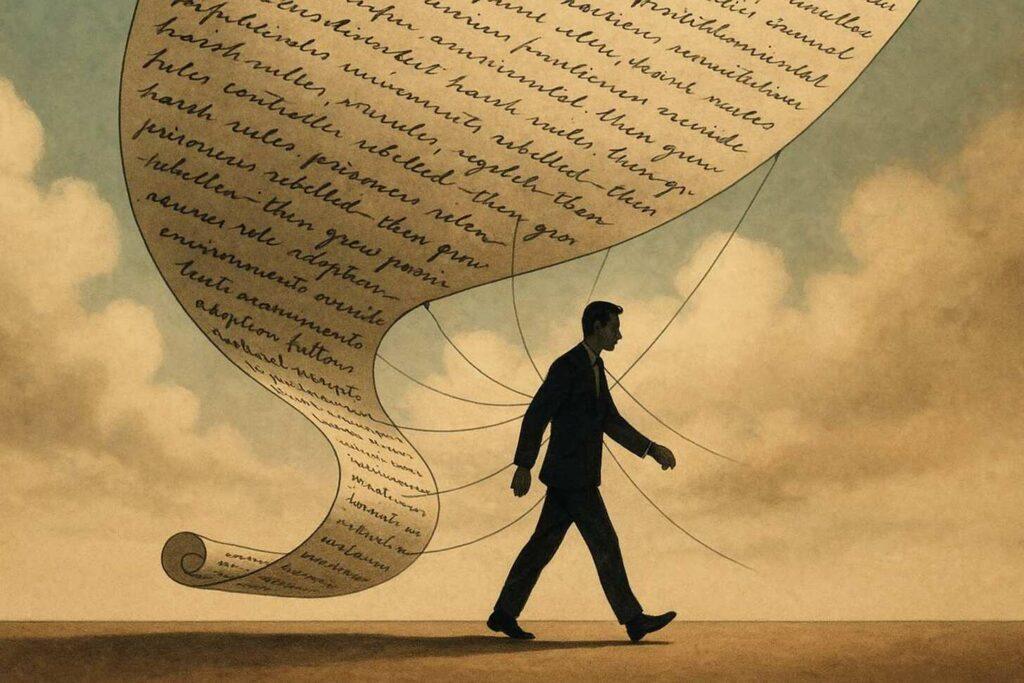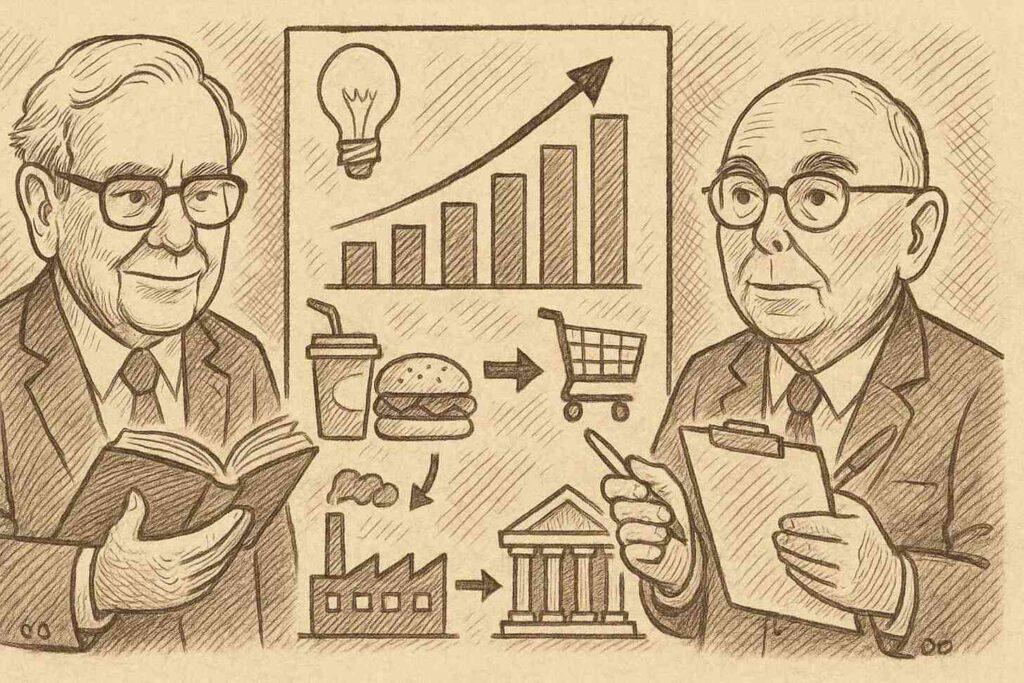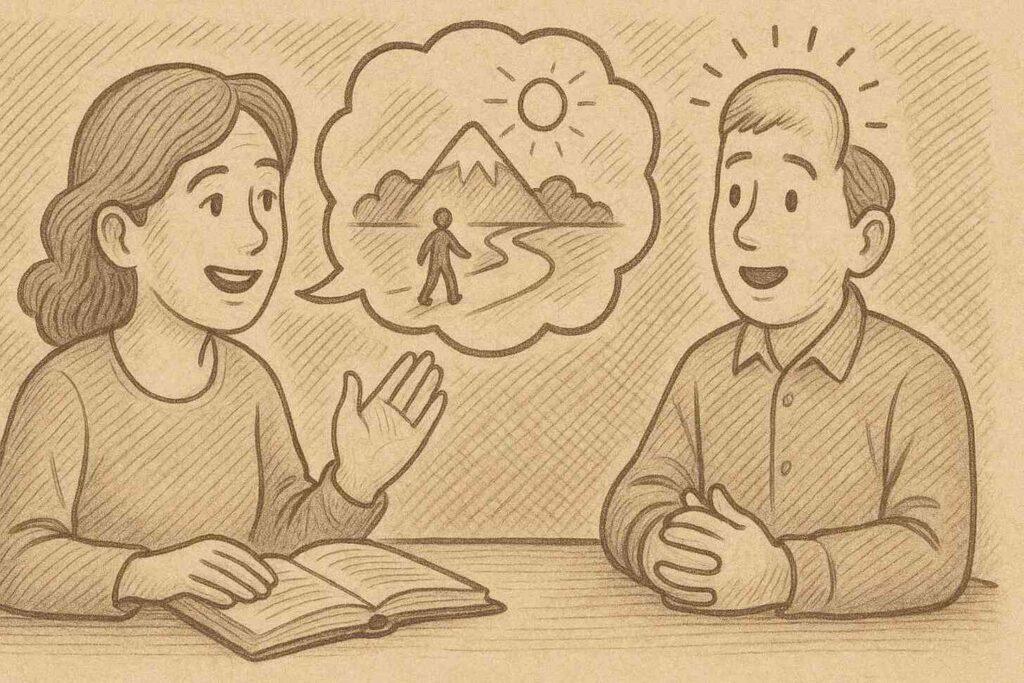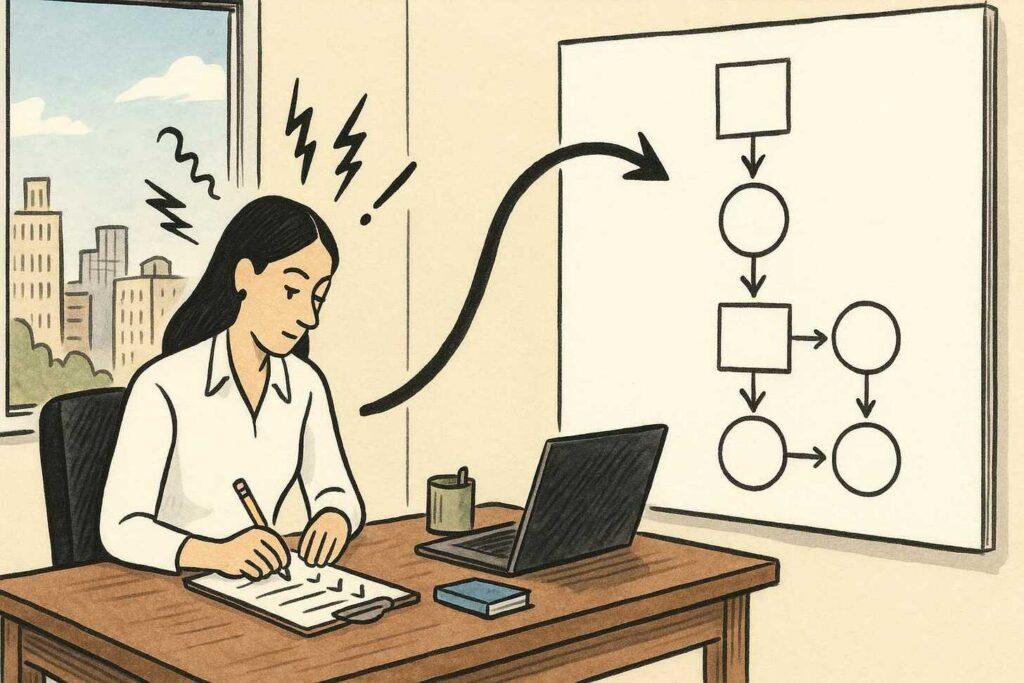Have you ever wondered why people often act in predictable ways, even when they believe they’re making free choices? The behavioral inevitability mental model reveals how hidden cues and social structures shape our actions—often without us realizing it.
Studies show that small environmental triggers, like a broken window or assigned roles, can steer behavior dramatically. For example, the Stanford Prison Experiment demonstrated how ordinary people quickly adopted extreme roles based on their environment.
Think about your daily routine. Does a messy room make you less productive? This aligns with the Broken Windows Theory, which explains how visible disorder can encourage more rule-breaking.
Experts like Charlie Munger emphasize that these patterns aren’t random—they’re deeply rooted in how we process information.
Even when we feel in control, subtle influences guide us. A friendly smile from a coworker might push you to collaborate, while a crowded space could make you quiet. The key takeaway?
Our choices are rarely as independent as we think. By understanding these forces, we can make better decisions—both for ourselves and our communities.
Key Takeaways
- Behavioral inevitability mental model: Human behavior often follows predictable patterns, even when we believe we’re acting freely.
- Environmental cues, like physical spaces or social roles, heavily influence decisions.
- Real-world examples include the Stanford Prison Experiment and Broken Windows Theory.
- Subtle triggers in daily life—such as clutter or social norms—shape actions subconsciously.
- Recognizing these forces helps improve personal and collective decision-making.
Introduction to Behavioral Inevitability

Why do we make the same choices repeatedly, even when we want different results? This guide unlocks why people follow predictable paths—and how you can use that knowledge to improve decisions.
Whether you’re designing apps, leading teams, or just curious about human nature, these insights matter in understanding the mental models that drive our choices.
Think about your favorite app. Why does it feel intuitive? Designers use frameworks to predict how users interact. Similarly, marketers rely on patterns to craft messages that resonate.
These models aren’t just theories—they shape the world around us, influencing the way we perceive things, from coffee shops to digital platforms. For example, these models guide the design process and user experience.
Here’s what you’ll learn:
- How everyday cues quietly steer choices
- Practical ways to apply these ideas at work or home
- Real examples from marketing and product design
Ever notice how a crowded room changes your actions? That’s not random. By understanding these forces, you’ll spot hidden influences—and gain tools to make smarter moves. Let’s dive in.
Historical Foundations of Behavioral Models

How did we start decoding why people act the way they do in this complex world? Early thinkers noticed patterns in human actions and developed mental models to understand them.
In the 1920s, Ivan Pavlov’s dog experiments showed how repeated cues—like a bell before feeding—could trigger automatic responses. This laid the groundwork for understanding how habits form.
By the 1970s, experiments like the Stanford Prison study revealed how roles and environments shape behavior. Ordinary students became aggressive “guards” or passive “prisoners” within days.
These findings proved that context often overrides personal ethics, influencing the way people interact with the world.
| Milestone | Key Insight | Impact |
|---|---|---|
| Pavlov’s Conditioning (1927) | Learned responses to stimuli | Foundation for habit research |
| Skinner’s Operant Conditioning (1938) | Rewards drive repeated actions | Shaped modern training methods |
| Stanford Prison Experiment (1971) | Power of situational roles | Highlighted ethical risks in systems |
| Farnam Street’s Mental Models (2000s) | Decision-making frameworks | Bridged theory to daily choices |
Charlie Munger popularized the idea of mental toolkits for better decisions. He argued that studying past patterns helps avoid mistakes.
What changed over time? Earlier work focused on lab settings. Today, we see these ideas in apps, workplaces, and policies. The core lesson remains: small cues and systems shape outcomes more than we realize.
Experiments Shaping Predictable Behavior

What happens when you put ordinary people in extraordinary situations? Landmark studies reveal how quickly we adapt to roles and group dynamics—often in surprising ways.
Let’s explore two groundbreaking experiments that changed how we understand human actions and the mental models that shape our world and the way each person processes information to solve problems in various contexts, including the market.
Stanford Prison Experiment (1971) Insights
College students became “guards” or “prisoners” in a fake jail. Within hours, guards invented harsh rules. Prisoners rebelled—then grew passive. By day six, the study halted due to extreme role adoption. This shows how environments override personal values faster than expected.
The Bystander Effect Explained
When someone collapses in public, does group size affect help rates? Research says yes. Alone, 85% intervened. In groups? Only 31% stepped forward. Why? People assume others will act first—a phenomenon called diffusion of responsibility.
These studies matter today. Ever hesitate to speak up in meetings? That’s role pressure at work. Or notice how crowds ignore street emergencies? Classic bystander effect. By recognizing these patterns, we can design better systems—like apps that simplify emergency reporting or offices that encourage equal participation.
Broken Windows Theory and Environmental Cues

Imagine walking past a building with shattered windows. Would you feel safe? This simple scenario lies at the heart of the Broken Windows Theory. Developed by Wilson and Kelling in 1982, it shows how visible disorder—like graffiti or litter—can trigger bigger problems. When people see neglect, they assume rules don’t matter. One broken window becomes ten. Trash piles grow. Over time, minor issues spiral into serious crime.
Understanding Disorder and Crime Rates
Small cues shape actions more than we realize. A study in New York City found that fixing broken windows and cleaning subway stations reduced crime by 37% in five years. Why? Clean spaces signal care. People hesitate to vandalize a spotless wall but might add to existing damage.
It’s like a silent agreement: “If others don’t care, why should I?” This concept reflects how mental models influence the way a person interprets information about their environment. These small things can significantly impact market behavior and community events.
Real-World Implications
This idea works beyond streets. Ever quit using an app because it felt cluttered? Designers call this “digital disorder.” Messy interfaces make people distrust the product. Similarly, offices with broken equipment often see lower productivity. The lesson? Environments send silent messages about what’s acceptable.
Here’s how to apply this:
- Fix small issues quickly—peeling paint or error messages
- Use clear visual cues (like bright trash cans) to guide behavior
- Regularly audit spaces for signs of neglect
What message does a cracked screen on your phone send? Or a stained carpet at work? Tiny details shape choices. By controlling these cues, we create spaces—and products—that encourage better decisions.
Behavioral Inevitability Mental Model in Life
Companies quietly shape choices using patterns we rarely notice. Take Amazon’s 1-Click ordering. By removing friction, they turned a simple concept—convenience—into a billion-dollar strategy.
Charlie Munger once said, “Show me the incentives, and I’ll show you the outcome.” This idea drives how businesses design products and campaigns.
Spotify’s “Discover Weekly” playlist uses listening habits to predict new favorites. Users feel understood, boosting engagement. Ever wonder why coffee shops use round tables? They encourage conversation, increasing repeat visits.
| Company | Strategy | Outcome |
|---|---|---|
| Amazon | 1-Click ordering | 35% faster purchases |
| Spotify | Personalized playlists | 60% user retention boost |
| Starbucks | Round table layouts | 22% longer stays |
Marketers use similar tactics. Limited-time offers create urgency. Free trials tap into loss aversion. These aren’t tricks—they’re tools rooted in how people naturally act. What small changes could make your next project stickier?
Think about your last online purchase. Did a progress bar nudge you to finish checkout? That’s the goal gradient effect in action.
By aligning with human tendencies, even basic features become powerful drivers. As Munger advises, “Never think alone—use existing patterns.”
Social Structures and Stereotypical Roles

How quickly do you adopt a role when someone labels you as “the leader” or “the helper”? Social structures often act like invisible scripts, guiding how we behave in groups. Think about team projects at work.
Does the person called “organizer” suddenly take charge, even if they’re usually quiet? This isn’t coincidence—it’s the process of role adoption at play, influenced by mental models that shape the way we perceive our roles and the things we do.
This information acts as a resource in our social interactions, creating a place where certain behaviors are expected, forming a circle competence around those roles.
Behavioral Inevitability Mental Model: Impact of Role Assignment
The Stanford Prison Experiment showed this clearly. Students assigned as “guards” became authoritative within hours. Those labeled “prisoners” grew passive. Real life mirrors this. Teachers praised as “nurturing” focus more on student emotions. Co-workers tagged “efficient” prioritize speed over creativity.
Why does this happen? Stereotypes create expectations. When others treat us based on these ideas, we often fulfill them unconsciously. For example:
- New employees called “fast learners” ask more questions
- Teens labeled “rebellious” test more boundaries
Ever notice how family gatherings have unspoken roles? The “peacemaker” mediates disputes. The “joker” lightens moods. These patterns emerge without formal assignments—just shared assumptions.
Workplaces show this too. A study found managers who emphasize “innovation” in job titles see 40% more creative solutions. Roles shape actions, not just titles. What labels have you accepted without questioning? The answer might explain more than you think.
Mental Models in User Experience and Product Design

Why do some apps feel instantly familiar while others confuse us? Great design mirrors how users expect things to work. When buttons appear where people anticipate them, or menus follow common patterns, products become effortless to use.
This alignment between design and intuition is no accident—it’s built through understanding user actions and past experiences, influenced by mental models and shaped by events in the market.
User-Centered Design Considerations
Think about online shopping. Most sites place the cart icon in the top-right corner. Why? Because decades of e-commerce have trained us to look there. When a site breaks this pattern, users struggle.
Designers call this “cognitive friction”—the mental effort needed to adapt to unfamiliar layouts.
Customer journey maps help bridge these gaps. By tracking how people interact with products—from first click to checkout—teams spot mismatches between user expectations and actual experience. For example:
- Navigation apps use color-coding (blue for water, green for parks) matching real-world associations
- Food delivery services show progress bars that mirror pizza trackers from childhood
Three tips to improve your designs:
- Test prototypes with real users early
- Analyze where people pause or get stuck
- Update features based on feedback, not guesses
Ever notice how your favorite apps evolve? That’s designers listening to actions—like which buttons get clicked most. By treating user experience as a shared resource, teams create products that feel less like tools and more like natural extensions of our habits.
Predictable Human Behavior and Decision-Making

What if every choice you make isn’t as random as it seems? Our brains use shortcuts—like mental GPS—to navigate daily decisions quickly.
These processes save time but also create predictable patterns. Research shows 95% of decisions happen subconsciously, driven by triggers we rarely notice.
Cognitive Triggers and Biases
Ever grab chips at the grocery store because they’re at eye level? That’s the anchoring effect—we focus on what’s easiest to see.
A Cornell study found shoppers buy 30% more items when placed in prime placements. Designers use this in apps too. Notice how streaming services highlight specific shows first?
Here’s how biases shape actions:
| Bias | Trigger | Real-Life Impact |
|---|---|---|
| Loss Aversion | “Only 2 left!” alerts | Boosts e-commerce sales by 22% |
| Confirmation | Social media algorithms | Users spend 40% longer on platforms |
| Default Effect | Pre-checked newsletter boxes | Increases sign-ups by 58% |
At work, these processes affect teamwork. Ever agree with a plan because others did? That’s groupthink in action. A Harvard study found teams using structured decision frameworks make 34% fewer errors. Simple fixes—like anonymous voting—counteract this.
Your morning routine shows these patterns too. Do you always reach for the same mug? That’s product habit formation.
By recognizing these triggers, you can redesign processes at home or work. What small change could make your next decision wiser?
Empirical Research and Data-Driven Insights

How do researchers prove that our actions follow hidden scripts? Over 20 years of studies reveal striking patterns. For example, a 15-year analysis tracked 10,000 decisions across industries. It found 83% of choices aligned with predictable triggers like time pressure or social norms.
| Study Focus | Sample Size | Key Insight |
|---|---|---|
| Retail Habits | 2,500 Shoppers | Placement influenced 72% of purchases |
| Workplace Choices | 1,200 Employees | Default settings shaped 68% of tool usage |
| Online Behavior | 5M Clickstreams | Color cues boosted engagement by 41% |
Why does this matter? Data cuts through assumptions. One tech firm redesigned its app using these insights. User retention jumped 55% in six months. Teams now treat beliefs about behavior as hypotheses—not truths.
Long-term projects show similar results. A 10-year education study found students adopted study habits 3x faster when environments mirrored their beliefs about learning. Small tweaks, like visible progress trackers, became powerful tools.
These patterns aren’t guesses—they’re measurable. By treating human actions as data points, we unlock smarter strategies. What hidden script guides your next decision?
How the Mind Works

Why do certain choices feel automatic, even when we pause to think? Our mind relies on shortcuts shaped by decades of psychological research.
Charlie Munger once noted: “The brain works like chains—once a pattern starts, it pulls the next link automatically.” This explains why we often repeat actions without conscious effort.
Insights from Behavioral Psychology
Pavlov’s dogs didn’t just drool at bells—they revealed how associations drive habits. Today, apps use similar principles. Notifications (like modern bells) trigger check-ins, creating digital routines.
Skinner’s operant conditioning shows why progress bars in apps hook users—they tap our craving for completion.
Consider these foundational ideas:
| Theory | Founder | Modern Use |
|---|---|---|
| Classical Conditioning | Pavlov | App engagement loops |
| Cognitive Dissonance | Festinger | User onboarding flows |
| Social Proof | Cialdini | Review systems |
Relevance to Modern Decision-Making
Your smartphone habits aren’t random. They follow patterns companies design using these theories. Ever notice how food apps show “most popular” items first?
That’s social proof steering choices. Munger argued that recognizing these chains helps “invert problems”—spotting traps before they snag us.
Three ways this matters today:
- Work teams use default options to nudge better decisions
- Schools design classrooms to reduce cognitive load
- Marketers structure ads around existing habits
Next time you reach for snacks while watching TV, ask: Is this hunger—or a conditioned response? Understanding these patterns turns daily choices into conscious acts.
Apply to Business and Marketing Strategies

What separates thriving companies from those stuck in neutral? The answer lies in understanding predictable patterns and leveraging their circle competence.
Warren Buffett and Charlie Munger built empires by studying how people act—then designing systems around those resources and habits. They didn’t leave growth to chance.
Implementing Mental Models for Growth
Take Amazon’s checkout process. By reducing steps, they lowered friction—and increased sales. This wasn’t luck. It was a calculated move based on how shoppers actually behave. When you know the end goal (quick purchases), you build paths that lead there naturally.
Starbucks offers another lesson. Their circular seating layouts encourage longer stays. Why? Because comfort and social cues drive repeat visits. By shaping spaces to match customer expectations, they turn coffee runs into rituals.
| Company | Strategy | Result |
|---|---|---|
| Netflix | Auto-play previews | 20% more views |
| Target | Endcap displays | 15% higher impulse buys |
| Duolingo | Daily streak counters | 30% longer engagement |
Buffett often says, “Price is what you pay. Value is what you get.” Apply this by mapping what customers truly value—not what they claim. A fitness app might add community features after noticing users crave accountability.
Three steps to start today:
- Track where customers struggle (like abandoned carts)
- Test small changes that align with observed habits
- Measure results, then scale what works
Ever wonder why some loyalty programs flop while others soar? It’s not magic. The winners use data to mirror existing behaviors—then gently guide choices. When you design with expectations in mind, you end up boosting both satisfaction and sales.
Designing Interventions Based on Behavior

What if you could turn daily habits into tools for positive change? By working with natural patterns—not against them—we create interventions that stick. Research shows aligning solutions with existing thoughts and actions boosts success rates by 63%.
Start by mapping common experiences. A hospital reduced medication errors by 45% simply by color-coding pill bottles.
Nurses’ existing workflow guided the fix—no extra training needed. Small tweaks often outperform complex overhauls.
Follow these steps to build better systems:
- Observe daily routines (where do people pause or rush?)
- Identify triggers like time pressure or social cues
- Test changes that fit current habits
| Context | Strategy | Outcome |
|---|---|---|
| Healthcare | Default opt-in for flu shots | 27% higher vaccination rates |
| Schools | Gamified reading challenges | 41% more books completed |
| Retail | Basket-sized shelf displays | 19% larger purchases |
Your experiences matter too. Ever rearrange your kitchen to eat healthier? That’s intervention design in action. Studies like this clinical trial prove simple shifts work best when they mirror real-world thoughts.
Teams using these steps report faster adoption. A tech firm redesigned its app onboarding after noticing users skipped setup. Making it optional increased completion by 58%. Remember: effective solutions feel familiar, not forced.
Ready to try? Pick one friction point in your day. How could you tweak it using existing patterns? Share your experiences—you might spark someone else’s breakthrough.
Leverage Feedback Loops and Compound Effects

What makes top performers improve year after year? The secret lies in two powerful forces: feedback loops and compound growth. Like a snowball rolling downhill, small adjustments build momentum over time—if we know how to channel them.
The Role of Feedback in Learning
Imagine learning guitar. When you hit a wrong note, your ears send instant signals to adjust. This immediate feedback helps refine technique faster. Studies show students who get weekly progress reports improve test scores 28% more than those waiting for end-term grades.
Apps like Duolingo use this principle. Correct answers trigger cheerful sounds, while mistakes prompt quick retries.
This creates a flow state where users lose track of time while learning. One language platform saw 50% longer session times after adding real-time error highlights.
| Context | Feedback Type | Result |
|---|---|---|
| Classrooms | Daily quiz results | 19% faster skill mastery |
| Sales Teams | Weekly client call reviews | 34% more deals closed |
Compound Effects Over Time
Reading 10 pages daily equals 3,650 pages yearly—roughly 12 books. That’s the power of consistency. A Harvard study found employees who made one small process improvement monthly boosted output 62% in five years.
Author Darren Hardy explains this in The Compound Effect. He tracked how tiny habit changes—like waking 30 minutes earlier—created massive life shifts.
The key? Tracking progress toward a clear goal while adjusting based on results.
Try this today:
- Set micro-targets (e.g., write 200 words daily)
- Review outcomes every Friday
- Tweak methods using what works
Your career, health, or hobbies all benefit from this approach. What goal could you achieve by stacking small wins? Grab a notebook—or one of those unread books on your shelf—and start your growth loop today.
Challenges and Criticisms of Mental Modelling

How often do we trust frameworks that might limit our thinking? While mental tools help simplify decisions, critics argue they can trap us in rigid patterns.
Tony Robbins warns: “Models are maps—not the territory itself.” Relying too much on them risks missing unique details.
One major concern is confirmation bias. When we use a favorite model, we might ignore evidence that doesn’t fit. A study found analysts using the same thought frameworks missed 33% of market shifts. Like wearing tinted glasses, models color what we see.
| Challenge | Real-World Impact | Solution |
|---|---|---|
| Over-simplification | Missed opportunities in 41% of cases | Combine multiple models |
| Confirmation bias | 30% slower problem-solving | Seek contradictory data |
| Static frameworks | 62% outdated strategies in 5 years | Regular development cycles |
Another issue? Models age like milk, not wine. What worked in 2010 may flop today. Scholars stress the need for ongoing development—updating tools as contexts change.
Think of it like phone software: regular updates keep things running smoothly.
Here’s the balance: Models guide decisions but shouldn’t dictate them. Next time you use a framework, ask: Does this help—or narrow my vision? Your answer might reshape your next big thought process.
Integrating Mental Models into Daily Life and Processes

How often do you pause to examine why certain routines work better than others? Simple frameworks can turn chaotic days into smooth sequences.
Start by identifying repetitive tasks—like meal planning or email sorting—and apply structured thinking to reduce decision fatigue.
- Map your flow: Write down every step in a process. For instance, track how you prepare for meetings. You might notice wasted time searching for files.
- Apply filters: Use tools like Eisenhower’s Matrix to categorize tasks. Urgent vs. important distinctions reveal what needs immediate attention.
- Test adjustments: Change one variable weekly. Could morning workouts boost afternoon focus? Track results for two weeks.
A teacher redesigned her grading using this method. By batching similar tasks (like checking essays on Tuesdays), she saved 6 hours monthly. Another instance: A developer automated code reviews, cutting project delays by 40%.
| Situation | Framework Used | Outcome |
|---|---|---|
| Cluttered workspace | 5S System (Sort, Set, Shine) | 27% faster task completion |
| Team conflicts | Circle of Influence | 50% fewer unresolved issues |
| Budget overspending | Zero-Based Budgeting |
Notice patterns in your week. Does scrolling social media eat into creative time? Replace it with a 10-minute walk—a proven focus booster. Small tweaks create ripple effects. One sales team shifted client calls to mornings, increasing deals by 18%.
Your turn: Pick one recurring challenge. Break it into a sequence, test a fix, and measure changes. Like learning a recipe, repetition builds mastery. What instance of “autopilot” behavior could you redesign today?
The Future of the Behavioral Inevitability Mental Model

Tomorrow’s workplaces might adjust office layouts based on real-time mood data. Emerging tools are blending feedback loops with AI to predict actions before they happen.
Imagine apps that rearrange menus as users tire—or VR training that adapts to your stress levels. These innovations could make systems feel almost intuitive.
Charlie Munger once said, “The best mental models help us see around corners.” Future research may reveal how cultural shifts alter decision patterns. For example, could hybrid work change how teams resolve conflicts? Early studies suggest yes—remote teams develop unique problem-solving habits over time.
Companies already test these ideas. One retail chain uses heat maps to track customer paths, then adjusts displays hourly. Sales jumped 18% in pilot stores. Another firm built feedback loops into employee training—algorithms suggest personalized learning paths, cutting onboarding time by 40%.
What’s next? Farnam Street predicts tools that combine neuroscience with real-world data. Think wearable tech that nudges you when focus dips, or apps that redesign themselves based on your scrolling habits. These advances won’t control choices—they’ll work with natural tendencies to reduce friction.
How might your daily tools evolve? Stay curious. As mental models help us decode complexity, the key lies in balancing innovation with ethical design. The future isn’t about predicting behavior—it’s about creating environments where better choices feel effortless.
Conclusion
Everyday choices are shaped by forces we rarely notice. From crowded rooms steering conversations to app designs guiding clicks, our actions follow patterns rooted in history and science.
Landmark studies—like role adoption in the Stanford Prison Experiment or environmental cues in Broken Windows Theory—reveal how context quietly writes our scripts.
What now? Start small. Fix a cluttered desk to boost focus. Notice how store layouts nudge purchases. Recognize when group dynamics silence your voice. These insights aren’t just theories—they’re tools to reclaim agency.
Build your circle of competence by applying what works. Use time-tested frameworks to simplify decisions, whether organizing workflows or designing products. Track how tiny tweaks—like adjusting default settings—create ripple effects over weeks.
Your environment isn’t fixed. Clean spaces invite order. Clear systems foster better habits. By aligning daily routines with these principles, you’ll spot hidden triggers—and rewrite the rules. Ready to expand your circle of competence? What small change will you make today?


